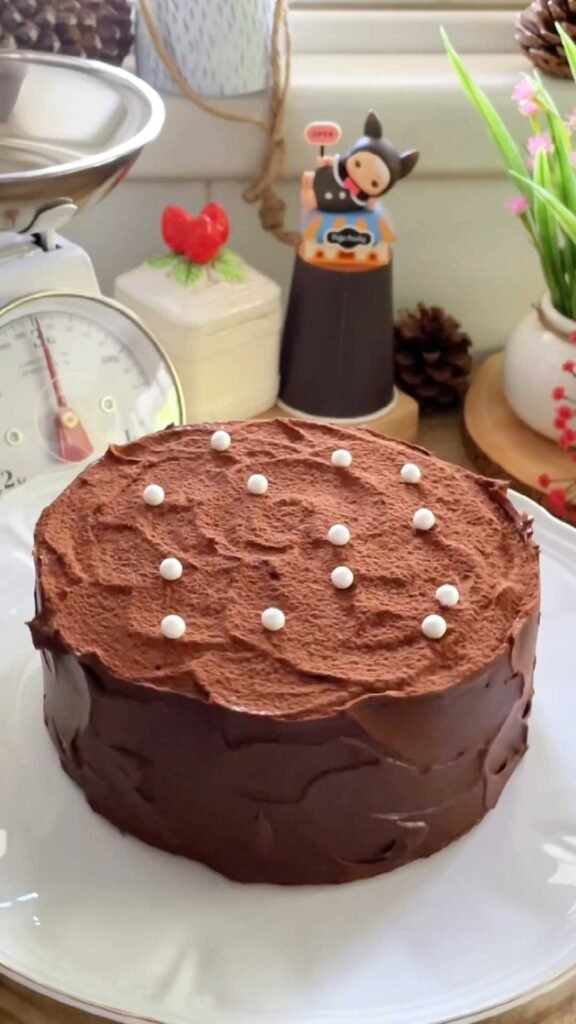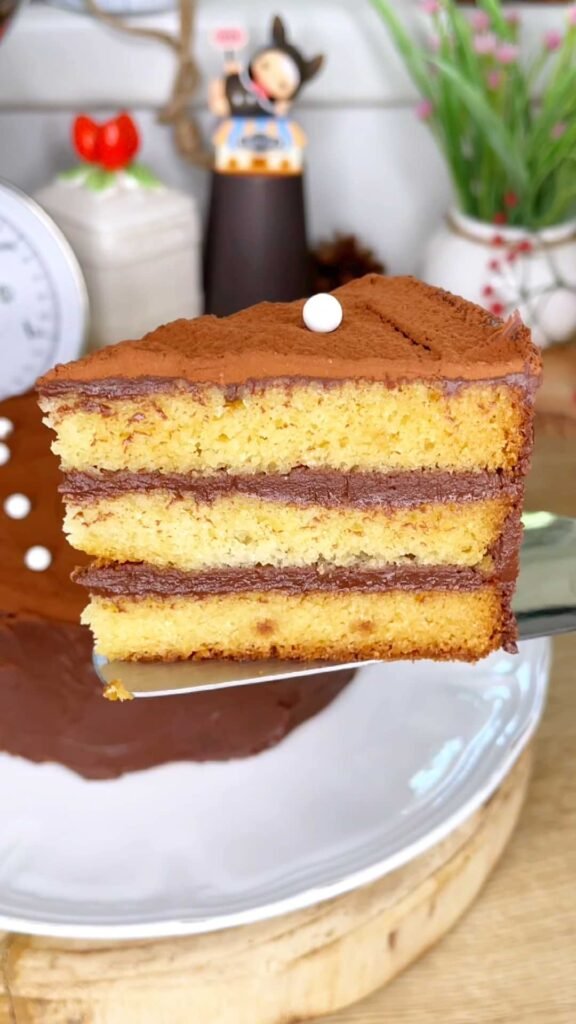Gluten Free Vanilla and Chocolate Ganache Layer Cake
Soft and moist gluten free vanilla and chocolate ganache layer cake recipe. This cake caught me by surprise and broke a lot of bias I had towards gluten free baking. This cake design is also very simple and can be re-created at home even if you do not possess professional cake icing or piping skills.
Gluten free cakes are made slightly different than cakes made with wheat flour.
You do not necessarily need an electric mixer, as well as there’s not always a need to separate eggs. Overmixing is not a concern, since gluten is not being developed. However, you need to accept that the rules of this game are a little bit different. This vanilla torte cake recipe can be a wonderful base for other combinations, not just with chocolate ganache. I recommend to read through the separate article on gluten free baking, available here, as well as the recipe’s instructions down below for additional tips related to this specific recipe.
First published:
Last modified:
Gluten Free Vanilla and Chocolate Ganache Layer Cake
Equipment: Round cake pan, 15cm (d) x 7.5cm (h), sides and bottom lined with parchment paper
Recipe: A single cake sized 15cm (d) x 6cm (h)
Cake Batter:
| Ingredient | Amount (g / units) |
| Unsalted Butter (melted) | 50g |
| Vegetable Oil | 25g |
| White Granulated Sugar | 140g |
| Salt | 1/4 tsp |
| Eggs | 112g (2 Large sized eggs) |
| Sour Cream 15% | 40g |
| Milk | 85g |
| Vanilla Extract | 7g |
| White Rice Flour | 85g |
| Potato Starch | 50g |
| Almond Meal | 35g |
| Baking Soda | 4g (1/2 + 1/8 tsps) |
| Baking Powder | 5g (1 tsp) |
| Xanthan Gum | 1/4 + 1/8 tsps |
Chocolate Ganache:
| Ingredient | Amount (g / units) |
| Dark Chocolate (55-60%) | 130g |
| Heavy Cream (38%) | 130g |
Preparation instructions:
For the cake batter:
- Pre-heat your oven to 175C, fan mode off, placing a baking rack at the lowest level inside the oven.
- Into a large mixing bowl, add the melted butter, oil, sugar, salt and vanilla extract.
- Sift the dry ingredients over the dry ingredients: Rice flour, potato starch, almond meal, baking powder, baking soda and xanthan gum.
- Using a spatula, mix the ingredients together to coat the flours with the fats, until the mixture becomes dry and crumbly, that almost reminiscent of a cookie dough. Do not be tempted to use a whisk at this stage as it will not mix effectively. Make sure you thoroughly mix the ingredients together, that there are no pockets of flours, lumps, or dark spots.
- Add in the eggs and milk. Start mixing using the spatula to slightly loosen the mixture. Then, using a hand whisk, mix the batter thoroughly to get rid of all lumps and the batter becomes fully smooth. There is no need to be concerned about over mixing.
- Add the sour cream and mix it will into the batter using the whisk until smooth.
- Transfer the batter to the prepared baking pan, and bake in the pre-heated oven for 40 minutes, or until a cake tester inserted into the center of the cake, comes out clean.
Note: After about 15 minutes of baking, the cake’s crust will brown excessively. In order to prevent over-browning, and dramatic dome development during baking, cover the cake with a piece of aluminum foil at this stage, and continue baking. Covering the cake will help the batter spread more evenly inside the pan and prevent the doming. However, after baking the cake will slightly sink in the center. This happens because the top skin separates from the crumb during baking, as it is not directly exposed to the heat.
However, covering the cake lets you maximize the uniform number of cake sheets you can extract from a single batch. But this all depends on how you plan to use this cake, so if you don’t mind the dome, you may keep the cake uncovered throughout the entire baking time.
If you are doubling the recipe, I recommend to bake in two separate cake pans.
- Allow the cake to cool down in the pan, over a cooling rack, for 15 minutes before unmolding. Then, allow the cake to cool down completely before cutting it into 3 equal, 1.5cm tall cake sheets, as well as before filling and icing the cake.
For the chocolate ganache:
In a medium sized bowl, microwave the chocolate and heavy cream together and mix to a smooth ganache. Set it to the side until the ganache reaches a working temperature of between 19-21C (its consistency will become more stable, and spreadable).
Cake assembly:
- Spread 90g of the ganache and cover it with another cake sheet.
- Keep stacking all the sheets in similar manner.
- Ice the sides and the top part of the cake with the remaining amount of ganache, and decorate as shown in the photo, or per your personal preference.









